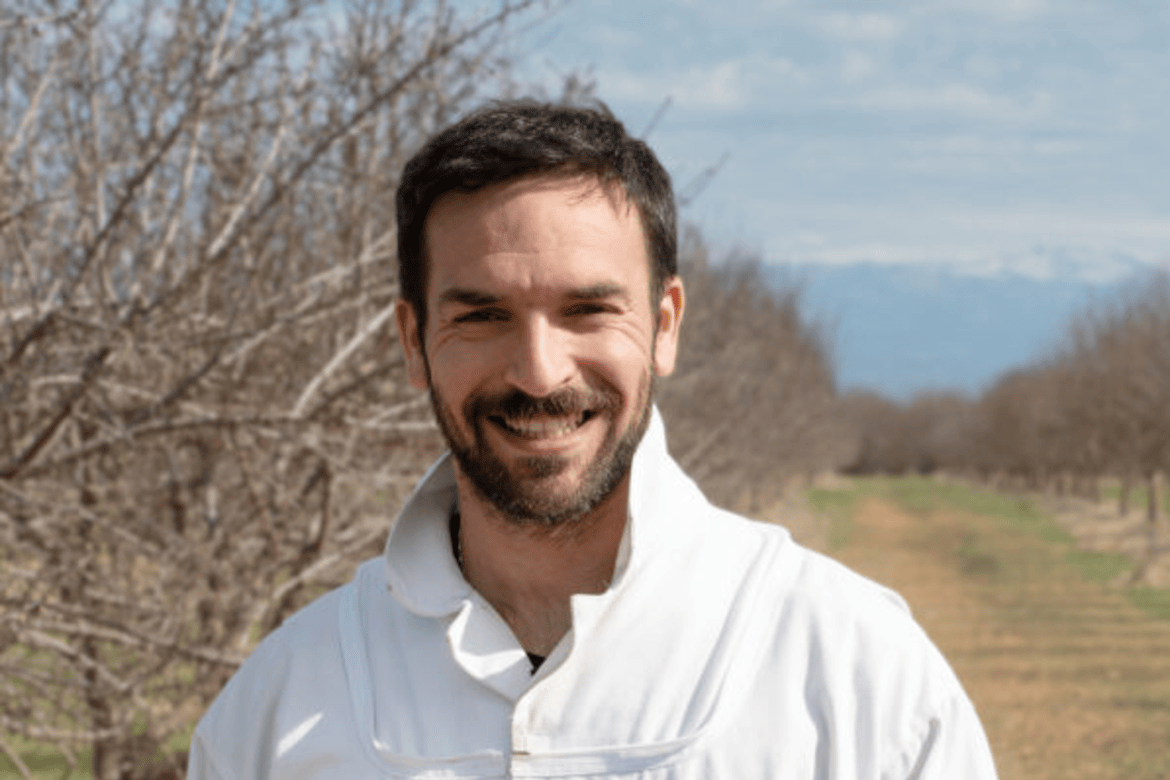The Center for Data Innovation recently spoke with Yuval Regev, cofounder of BeeHero, a California-based company that uses AI to turn real-time sensor data into predictive insights for pollination. Regev discussed how BeeHero’s data platform helps growers and beekeepers monitor pollinator behavior, optimize hive placement, and improve both crop outcomes and colony health.
David Kertai: What is BeeHero?
Yuval Regev: BeeHero leads in data-driven precision plant pollination. We combine in-hive and in-field sensors with real-time AI analytics to give growers and beekeepers unmatched visibility into commercial pollination.
We offer two core products: in-hive sensors that continuously collect data on bee health and activity to help beekeepers improve colony welfare, and in-field sensors that track pollinator activity at the crop level. These insights help growers to identify ideal foraging windows, determine the best hive spacing and density, and build predictive models to boost crop yield and pollination success.
Our AI model learns continuously from over 350,000 hives generating 25 million daily data points, advancing the understanding of pollinators and crop interactions. BeeHero’s platform supports healthier colonies, higher productivity, and more efficient resource use. By reducing colony loss and emissions from hive transport, we’re helping build a more resilient and climate-ready food system.
Kertai: How do your models learn to spot and predict problems in hives?
Regev: Our models train on vast amounts of high-frequency, multimodal data from commercial and research hives. While research hives are equipped with advanced sensors and cameras for in-depth data collection and model development, commercial hives provide large-scale, real-world data used to apply and refine those models. We use supervised learning on labeled events like queen loss or pesticide exposure, and unsupervised learning to spot subtle anomalies. Key features include acoustic shifts, spectral energy patterns, temperature trends, weight changes, and foraging behavior. Our research hives, equipped with cameras and high-fidelity sensors, generate labeled examples that help us build accurate classifiers.
We validate these patterns across commercial deployments and apply domain adaptation to maintain precision in diverse conditions. This lets us detect early signs of stress, like pre-swarm signals or chemical exposure, and alert beekeepers before issues worsen, improving outcomes and reducing colony loss.
Kertai: What kinds of data are most helpful for keeping bee colonies healthy?
Regev: We collect high-resolution, multi-modal data, along with environmental factors like temperature, humidity, and bloom timing. Inside the hive, sensors track queen piping, fanning, temperature, humidity, hive weight, and bee traffic, logged at sub-minute intervals. In the field, directional acoustic arrays identify wingbeat frequencies to classify pollinator activity, while other sensors record microclimate data such as light, temperature, and humidity.
Research hives with bee counters and hive scales provide deeper validation. All data streams to the cloud via low-power networks, where our model filters noise, extracts key features, and analyzes millions of points daily.
We prioritize biologically-relevant signals closely linked to crop outcomes. Our models detect both long-term patterns like brood instability and short-term issues such as heat stress. As the network grows, our system continuously refines thresholds and improves signal clarity for stronger colonies and more effective pollination.
Kertai: How do you factor in contextual factors like weather, disease outbreak, or pesticide use when analyzing hive health and bee activity?
Regev: Our models incorporate these factors directly into their analysis to reflect real field conditions. When weather suppresses foraging across a region, our models recalibrate baselines to avoid false alarms. When hives move to a new crop, we adjust thresholds to reflect nectar availability, floral attractiveness, and foraging intensity. We also recalibrate during seasonal or operational changes.
These dynamic calibrations allow our models to interpret hive behavior in the proper environmental and agronomic context, delivering more accurate alerts and smarter decision support for growers and beekeepers.
Kertai: What kind of impact has BeeHero had on the beekeeping and pollination industries so far?
Regev: BeeHero has reshaped the industry by replacing manual inspections with real-time, data-driven monitoring. Beekeepers now track hive health remotely year-round, allowing proactive actions like timely nutrition or queen replacement.
In 2024, BeeHero users reported nearly 50 percent fewer colony losses than the U.S. average, and only 30 percent losses during a winter when national losses reached 60 to 70 percent. Additionally, during a recent onion seed season, BeeHero identified a low-activity “pollination cold spot” in one field section. After the grower repositioned nearby hives, pollination activity rebounded within 48 hours, protecting crop yield. These results show how BeeHero empowers proactive management, protects both bees and crops, and supports a more resilient agricultural system.

